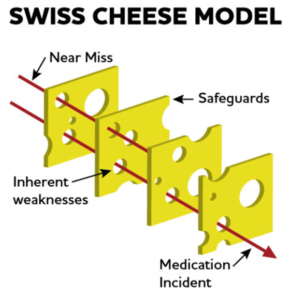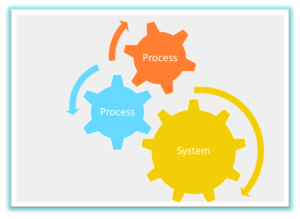Education booklet for patients and caregivers to enhance self care and monitoring, as well as early identification of heart failure symptoms.
Author: IPRO
Trauma-Informed Care Change Package for Nursing Centers
6-Step change package for nursing centers to become trauma-informed.
Shine a Light on Stigma
“Physicians Fighting Stigma: Judgement-Free Scripting for Stages of Change in Opioid Use Disorder” is a series of brief videos (less than 3 minutes each), presented by Bobby Redwood, MD. with the Superior Health Quality Alliance.
Annual Wellness Visit (AWV) Guide: Implementing Medicare’s Annual Wellness Visit A Reference Guide for Practices
This guide is intended to help practices implementing Annual Wellness Visit (AWV).
Trauma-Informed Care Change Package for Health Care Organizations
6-Step change package for health care organizations to become trauma-informed.
Performing Root Cause Analysis (RCA) with Performance Improvement Projects (PIPs)
Overview: A Root Cause Analysis (RCA) is a structured, facilitated team process to identify root causes of an event that resulted in an undesired outcome and develop corrective actions. The RCA process provides a way to identify breakdowns in processes and systems that contributed to the event and how to prevent future events.

The purpose of a RCA is to find out what happened, why it happened, and determine what changes need to be made. It can be an early step in a PIP, helping to identify what needs to be changed to improve performance.
Once you have identified changes that need to be made, the steps you will follow are those you would use in any type of PIP.
Use this Step-by-Step Guide for Performing Root Cause Analysis with Performance Improvement Teams to investigate events in your facility (e.g., adverse event, incident, near miss, complaint).
Download this fillable RCA PIP Team Template to track progress toward process improvements.

NOTE: Facilities accredited by the Joint Commission or in states
with regulations governing completion of RCAs should refer to those requirements to ensure all necessary steps are followed.
Safe Visitation Sample Policy Template
A modifiable template to develop a safe visitation policy. Please be aware you need to add your state specific guidance to policy.
Influenza Vaccine: What You Need to Know
Updated patient education flyer on the importance of the influenza vaccine.
SAMHSA Buprenorphine Guides for Opioid Use Disorder
SAMHSA has developed a Buprenorphine Quick Start Guide and Pocket Guide for all practitioners seeking to prescribe buprenorphine.
https://www.samhsa.gov/sites/default/files/quick-start-guide.pdf
Go to the Hospital or Stay Here? Using the Decision Guide to Reduce Hospitalization & ER Visits
During this keynote presentation, Dr. Ruth M. Tappen, EdD, RN, FAAN describes how to use a resident and family decision aid regarding transitions to acute care settings.
Slides from Dr. Tappen’s presentation can be found here. https://qi.ipro.org/wp-content/uploads/4_New-Day-Keynote2_Dec2021_Tappen_508-1.pdf
Using Data to Drive Improvement & CASPER
Lean how to understand your CASPER data and build an effective date review process.
IPRO Opioid and Pain Management QI Project
Link to Informational Webinar.
LINKS Portfolio: Sepsis
The IPRO QIN-QIO has prepared LINKS (Local Interactive Network of Knowledge Sharers) education materials and guidance to help spread awareness about health topics relevant to your community members, to support population health.
Sepsis: What You Need to Know
Help spread awareness about what sepsis is and what patients/community members can do to prevent it with this fact sheet.
https://drive.google.com/file/d/1lL2kbgezd1LH-t3CzkIn7jkPXRqAH08x/view?usp=share_link
Sepsis: Staying Healthy Through Awareness
This PowerPoint presentation is about what sepsis is, how to help prevent sepsis, and ways to build awareness about it for patients/consumers. The presentation slides can be adapted to fit the needs of your specific audience or community.
Opioid and Pain Management Best Practices: Strategies for Success: Self – Assessment
Use with Quality Improvement and Care Coordination: Implementing the CDC Guideline for Prescribing Opioids for Chronic Pain document and the Opioid and Pain Management Best Practice Aggregate Results Dashboard.